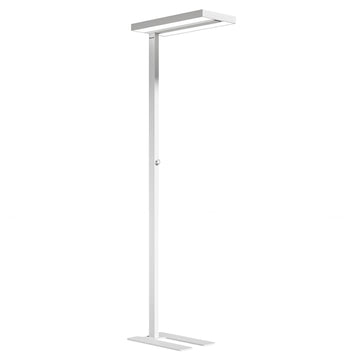The global LED lighting market size was worth USD 70.94 billion in 2022 and is expected to expand at a compound annual growth rate (CAGR) of 11.0% from 2023 to 2030. Rising construction in both developing and developed countries, together with government laws limiting the use of inefficient lighting systems, are the primary factors anticipated to drive the market. LED lighting has a long lifespan, no flicker, and great illumination strength while consuming less energy. Additionally, LED manufacturers are focusing on including features like Wi-Fi, occupancy sensors, and daylighting because these attract customers and increase product sales, thus fostering market growth.
LED lights are often a better option when compared to alternative lighting options like incandescent, CFL, incandescent, and halogen lights, as they can operate with little energy input while delivering strong illumination. LEDs are extensively utilized in both indoor and outdoor situations. LEDs allow designers versatility in their designs and the durability to withstand frequent switching. The market is expected to expand as consumers become more aware of their benefits.
The American National Standards Institute, China Compulsory Certification, and International Electrotechnical Commission are a few significant regulatory bodies that manage product certification. Manufacturing after obtaining the required licenses permits to do business, offer services, and import and export products. Governments in both developed and developing economies are attempting to lower high energy usage.
They are doing this by upholding a number of quality laws that assist them in preserving consumer safety, managing energy use, and monitoring environmental issues. LED lighting is an energy-saving solution with a 50,000-hour lifespan and lower electricity use. As a result, it is anticipated that stringent government rules limiting the use of lighting that uses a lot of energy will promote the expansion of the market.
When used as overhead surgical illumination earlier, halogen lights bothered medical workers during procedures or examinations. Additionally, the examination room's 50 to 100 W halogen bulbs with the tiny surgical illumination produced a lot of heat and consumed too much electricity
As a result, one factor anticipated to fuel the expansion of the target LED lighting market is manufacturers' strategy for combining LEDs in surgical illumination, exam lights, phototherapy, and endoscopy to enhance patient treatment experiences. The development of the LED lighting industry is also anticipated to be impacted by technological advancements in the medical device sector that will replace older or less efficient equipment.
The COVID-19 pandemic negatively impacted the global economy. The demand for LED lighting was reduced as a result of rigorous suspensions and lockdowns imposed on construction sites. However, the second half of 2021 saw an increase in construction due to the introduction of new as well as upgrading projects, which contributed to the steady recovery of the industry for LED lighting.









